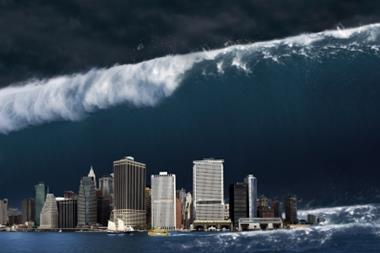Increasingly volatile weather is becoming a global trend and businesses need to be prepared for extreme and unprecedented disruptions
From snow in the Middle East to record high temperatures in Greenland, the past 12 months have produced some extraordinary weather and kept businesses on alert around the world.
The increasingly global nature of commercial operations means catastrophes and extreme weather events have widespread repercussions and affect organisations across many continents. However, it’s not just a side-effect of globalisation that is raising the risk profile of natural catastrophes and extreme weather events. The frequency of such events appears to be increasing too.
A sharp rise in the number of billion-dollar events is evident since 2010 in Aon Benfield’s Impact Forecasting 2013 report. Between 2003 and 2013, the average number of billion dollar events per year was 28. However, this figure was not reached until 2010 and subsequently exceeded each year thereafter.
Reasons for the increase in severe weather are widely debated, with global warming at the forefront of discussions, although experts cannot confirm or eliminate these theories owing to the lack of longitudinal evidence.
Typhoon Haiyan, which killed more than 6,000 people in the Philippines in November 2013, was the strongest tropical cyclone on record to make landfall. Professor Nigel Arnell, director at the Walker Institute for Climate System Research, says Haiyan is likely to be followed by equally devastating typhoons in the near future. “We can’t definitively say that tropical cyclones have become more or less frequent, but indications show intense cyclones might become more frequent. The analogy we use is the rolling dice; you could get two sixes by chance but when you get too many sixes, you suspect the dice are loaded.”
Haiyan was followed by severe winter storms in the Middle East in December. Snowfall caused major disruptions in parts of Egypt, Jordan and Lebanon that had not seen snowfall for decades.
It is not just the weather that has been unprecedented. In February 2013, a 20m-wide meteor smashed into the earth’s atmosphere near the Russian town of Chelyabinsk and exploded with the energy of about 500 kilotonnes of TNT. More than 1,000 people were injured and, at its most intense, the rock shone 30 times brighter than the sun, burning the skin of onlookers.
Eleven months later, a shift of the polar vortex covered Canada and most of the US in ice. More than 30 people were killed, with temperatures falling to record lows of less than -30°C in the northern state of Minnesota and snow fell in usually more temperate states such as Florida. Meanwhile, the period between 1 December 2013 and 31 January 2014 was the wettest in England and Wales for 248 years as record rainfall drenched the UK and other parts of Europe. Australia experienced its warmest year on record and was forced to declare a state of
emergency in New South Wales as bush fires burnt almost 200 homes.
In its 2013 annual climate statement, the World Meteorological Organization (WMO) said: “Comparing climate model simulations with and without human factors shows that the record hot Australian summer of 2012-13 was about five times as likely as a result of human-induced influence on climate.” The report also revealed 2013 was the joint hottest year on record with 2007 and that the coldest average years are now hotter than the hottest average years prior to 1998.
Climate change may or may not be behind the apparent increase in the frequency of extreme weather, but according to the WMO, the world is getting warmer and sea levels are rising.




















No comments yet